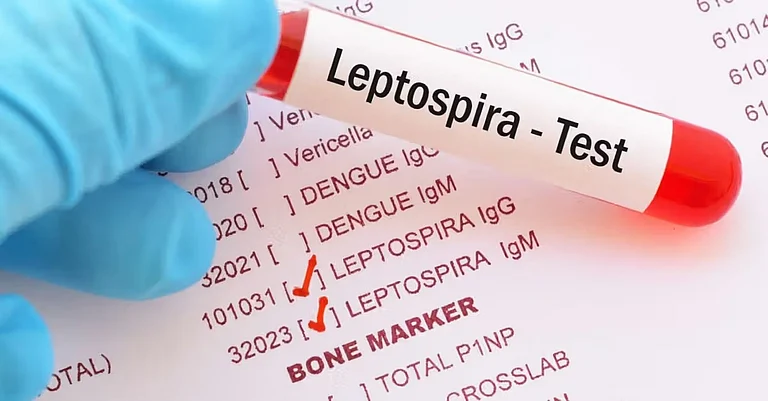Artificial intelligence (AI)-driven chatbot ChatGPT has made headlines in recent weeks. It has been in the news for writing academic pieces, cracking exams, and even producing news stories.
While a large number of people learnt about AI and its potential with ChatGPT, it's not the first such AI-driven tool. In fact, the journey of AI-driven tools dates back to 1950s and '60s when first such tools was built. From ELIZA in 1966 to ChatGPT, AI researchers covered a long road to produce tools that could potentially mimic human resposes.
However, even though ChatGPT appears to be able to do just about anything, it has its limitations. There is also ongoing debate about the very terminology of "artificial intelligence".
Here we trace the evolution of AI to ChatGPT and list AI tools similar to ChatGPT.
How did the idea of AI emerge?
Like most technologies, AI has covered the long road that began in 1950-60s in the aftermath of the World War II. The basic premise fuelling the push for AI was that machines should be automated and humans should be assisted more by the machines in their work.
However, science fiction came before actual AI. Stories often brought together AI and robots. These stories reflected the contemporary thinking that was exploring the possibility of intelligent machines.
"In the first half of the 20th century, science fiction familiarized the world with the concept of artificially intelligent robots. It began with the 'heartless' Tin man from the Wizard of Oz and continued with the humanoid robot that impersonated Maria in Metropolis," notes Rockwell Anyoha in an article for Harvard University.
The term "artificial intelligence" was coined by computer scientist John McCarthy, who is considered to be an early pioneer of this field. However, it was British polymath Alan Turing who laid the actual groundwork, notes Rockwell.
He noted, "Turing suggested that humans use available information as well as reason in order to solve problems and make decisions, so why can’t machines do the same thing? This was the logical framework of his 1950 paper, Computing Machinery and Intelligence in which he discussed how to build intelligent machines and how to test their intelligence."
In 1954, the first proof of concept emerged as Logic Theorist program that mimicked human responses.
Rockwell notes, "The Logic Theorist was a program designed to mimic the problem solving skills of a human and was funded by Research and Development (RAND) Corporation. It’s considered by many to be the first artificial intelligence program and was presented at the Dartmouth Summer Research Project on Artificial Intelligence (DSRPAI) hosted by John McCarthy and Marvin Minsky in 1956."
The evolution of AI
ELIZA
The first AI program that could communicate with humans came in 1966. It was named ELIZA.
ELIZA was developed by MIT Professor Joseph Weizenbaum. Based on human inputs, it responded with a set of stock responses. Though that's extremely primitive as per today's standards, it was considered to be "intelligent" at the time even though Weizenbaum denied it.
Technology Magazine noted, "It used pattern matching and substitution methodology to simulate conversation, and was intended to mimic human conversation. ELIZA could not converse with true understanding, but many early users were convinced of ELIZA's intelligence, despite Weizenbaum's insistence to the contrary."
A number of AI tools followed ELIZA, with ChatGPT being the latest and most well-known so far.
Dr Sbaitso
Dr Sbaitso was made in 1992. Technology Magazine noted that it was one of the first attempt to integrate AI into chatbot.
"Distributed with various sound cards manufactured by Creative Technology, the program 'conversed' with the user as if it were a psychologist and was designed to showcase voices the cards were able to produce," noted the magazine.
A.L.I.C.E
The A.L.I.C.E chatbot was made in 1995 and it was based on the natural language processing (NLP), a very early ancestor to ChatGPT.
"The program simulated chatting with a real person over the internet and could tell a user its age, hobbies and other fascinating facts, as well as answering the user’s dialogue," noted Technology Magazine.
The AI tools increased with the dawn of the 21st century as more digital datasets became available to 'train' AI tools.
IBM Watson
IBM Watson is a business AI tool by IBM. It is aimed at helping businesses in processing large volumes of data and making better decisions.
The IBM website says, "The Watson portfolio is designed to make it easy for you to use data from diverse sources, trust the recommendations and predictions from your AI models, and get more value from your AI, faster.
"Valuable information often exists in forms of language that can be hard for computers to understand: PDFs. Charts. Tables. Call logs. Handwritten documents. Blog posts. News articles. Tweets. This is far too much data for a person to read, process and synthesize. But it is not too much for AI that can comprehend the language of your business. With NLP, disparate, unstructured data can be brought together and processed so you can understand what it all means and make more informed decisions. Watson can better comprehend human language, the language of your industry, and even jargon that’s specific to your company."
Google BERT
Google's BERT is an AI tool that uses NLP to improve "understanding of unlabeled text across many different tasks". The tool is the further basis of several AI-driven tools and services.
The BERT stands for Bidirectional Encoder Representations from Transformers. It was developed as a "way to pre-train deep bidirectional representations from unlabeled text by jointly conditioning on both left and right context in all layers", as per nvidia.
Layer here refers to the 'deep learning' that drives BERT and other AI tools such as ChatGPT. With each layer, the program goes deeper. If data on fruits is fed, the program would likely look for basic shape or colour in the first layer, stem shape in the second layer, and so on, getting into greater detail step by step.
Facebook RoBERTa
Facebook's RoBERTa further builds upon Google BERT.
"RoBERTa builds on BERT’s language masking strategy, wherein the system learns to predict intentionally hidden sections of text within otherwise unannotated language examples...We also explore training RoBERTa on an order of magnitude more data than BERT, for a longer amount of time. We used existing unannotated NLP datasets as well as CC-News, a novel set drawn from public news articles, said Meta, parent company of Facebook.
This is unique as it paves way for AI tools to grow without the supervision of human developers.
"More broadly, this research further demonstrates the potential for self-supervised training techniques to match or exceed the performance of more traditional, supervised approaches," said Meta in a post>
Amazon Comprehend
Amazon Comprehend is a business AI tool that helps in business activities. The company says it is a natural-language processing (NLP) service that uses machine learning to uncover valuable insights and connections in text.
Amazon says it can carry out the following tasks:
- Mine business and call center analytics
- Index and search product reviews
- Legal briefs management
- Process financial documents
Microsoft Language Understanding Intelligent Service (LUIS)
Microsoft's Language Understanding Intelligent Service (LUIS) is a service that integrates AI into bots and internet of things (IoT).
"Designed to identify valuable information in conversations, LUIS interprets user goals (intents) and distills valuable information from sentences (entities), for a high quality, nuanced language model. LUIS integrates seamlessly with the Azure Bot Service, making it easy to create a sophisticated bot," says Microsoft about LUIS.
It also deals with natural language models, a comparable basis that also fuels ChatGPT and Amazon Comprehend.
Outstanding issues with ChatGPT, AI
Despite there appearing to be no limits to what AI can do, there are several actual limits and outstanding issues.
Firstly, ChatGPT is severely limited in its working. Its responses have a cut-off date of 2021, so it cannot respond to very recent or real-time queries, even though it answered this writer's question about Joe Biden's reelection. Even ChatGPT appeared to be uncertain how it happened. It appeared to give contradictory answers multiple times which went on to show that there exist fundamental limitations with the tool.
Moreover, ChatGPT is not a search engine. Its knowledge is largely, if not entirely, limited to the dataset it trained on.
In a conversation with this writer, ChatGPT said, "My training data comes from various sources, including Wikipedia, Common Crawl, and other publicly available text corpora. However, my knowledge has a cutoff date of September 2021, as I am not updated with any information that has been published after that...The dataset that I was trained on is my existing database of knowledge. It includes a vast collection of text data from various sources, including books, articles, websites, and other textual resources.."
It later said the size of its dataset is 570 GB.
One limitation of ChatGPT is it is not build to be personalised. Like Google or Instagram personalise our user experience, ChatGPT cannot do that.
"The other big deal is that ChatGPT doesn’t know anything about the user...Think about your closest friends: they likely have developed a complex understanding of who you are, and how to help you in the best way possible; ChatGPT can’t get that specific, and it makes the experience a lot less authentic," notes Popular Mechanics.
Moreover, at its core, ChatGPT is basically predictive text technology. It has fed on huge datasets so it can be relatively accurate. But it's still a predictive text tech so it cannot be relied that much for complex tasks.
"When you ask it a question, it’s not actually looking up the answer...It’s just trying to guess what looks like the correct answer," says Sameer Singh, an associate professor of computer science at the University of California Irvine, to Popular Mechanics.
In response to a question, ChatGPT said, "ChatGPT is a predictive technology that uses deep learning to process human natural language datasets in order to predict and generate responses to user queries. It uses a massive amount of text data to learn patterns and structures of language and develop an understanding of how words are used in context. When a user inputs a query, ChatGPT generates a response by predicting the most likely sequence of words that would follow, based on its training data."
Basically, ChatGPT breaks down sentences into words, understands it, builds context, and then, on the basis of vast dataset it has fed on, strings words in the most logical and coherent manner possible. How 'intelligent' is this? Actually, experts questions whether AI is actually 'intelligent' at all, putting the term itself into question.
"[...] Automation remains far from human intelligence in the strict sense, which makes the name open to criticism by some experts. The ultimate stage of their research (a 'strong' AI, i.e. the ability to contextualise very different specialised problems in a totally autonomous way) is absolutely not comparable to current achievements ('weak' or 'moderate' AIs, extremely efficient in their training field). The 'strong' AI, which has only yet materialized in science fiction, would require advances in basic research (not just performance improvements) to be able to model the world as a whole," notes Council of Europe in an article, though not in context of ChatGPT but in general context of AI.


























